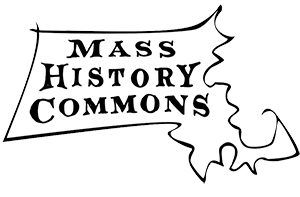Author: Aurora Daniel, Archival Field Fellow
In many ways, this is an exciting time to be beginning a professional journey as an archivist in the United States of America. In addition to numerous technological innovations that make our work easier and expand the reach of our repositories, there are issues and challenges surrounding information access, visual literacy, and civic engagement that require an archivist’s skill set and professional values in order to be addressed. Increasingly, people are looking to the past for understanding of how to solve problems in the present and future. One of the monumental historical events that many repositories are currently turning toward is the Semiquincentennial of U.S. Independence. Semiquincentennial is the latinization of 250th anniversary and is a helpful term to know through 2026, when the majority of the anniversary programming will take place across the country.
As someone who has been in undergraduate and graduate school in Massachusetts during many of the key anniversary dates related to the lead-up to the American Revolution, I’ve ended up working on many projects related to 250th-anniversary programs at various museums and historical societies. However, when I received my Archival Field Fellowship placement at the Franklin Historical Museum, it was the first time I was working on a collection related to a town’s founding as well. The town of Franklin was incorporated in 1778, shortly after the U.S. declared independence from Great Britain and in the midst of the American Revolutionary War (1775-1783). The result is an overlap between the national and town anniversary celebrations. As one might expect, it has meant that the archival materials are intermingled as well.

Over the course of a couple of months, I processed the Municipal Anniversaries Collection. When I started, materials were already separated into boxes based on the anniversary to which they were related, which made my job much easier. After assessing the collection, I created a processing plan based on how I roughly envisioned the collection being organized intellectually and physically. Most of the materials had no attributable donor or creator, so I decided to organize them into folders by the affiliated body or event. Within those folders they were organized chronologically, either by the date listed on the material itself or by the date of the event.

For the most part, the materials were in good condition, so there were only two conservation concerns to consider: numerous printed photographs with varying states of curling and three scrapbooks housed in scrapbook shells of unknown materials. After consultation with both Rowan Lowell, the archivist at the Franklin Historical Museum, and Tom Doyle, the MA SHRAB Roving Archivist for my project, we decided to reformat the scrapbooks and to use book weights to flatten the photographs.

There weren’t too many conservation concerns regarding the photographs. However, it was surprisingly difficult to address the concerns we found. The photographs with the worst of the curling were from the 150th town anniversary series. Despite a couple of weeks under book weights, they still had some curling. With Tom’s advice, I ultimately placed them in flat boxes with the weights on top in order to allow them to flatten out over the course of several months. While this will take place after the end of my fellowship, Rowan will be monitoring them. I placed the remaining photographs in polyethylene sleeves and stored them in photo boxes in hopes of preventing future curling through proper storage.

Next up were the scrapbooks. These were actually easier to deal with than the photographs. I was able to rehouse the contents of the first and third scrapbooks into archival albums. The first scrapbook had materials that were taped onto the pages so I used a spatula to gently lift the tape from the page. Then I cut the excess tape off before sliding the materials into the archival albums. For the third scrapbook, the materials were loose, which made rehousing them very simple.

In the second scrapbook, the materials were glued directly onto the pages. Since the pages themselves were of an unknown material and had already begun to yellow and warp, we decided to reformat the scrapbook by creating an archival copy. I scanned all the pages for future use. I removed the pages themselves from the original scrapbook shell and rehoused them in an archival album.

Overall, I enjoyed processing the wide variety of materials (photographs, newspapers, and pamphlets) in this collection. I’m looking forward to seeing how these materials are used in upcoming celebrations, as well as how they are used in upcoming statewide events. Since I’ll still be in Massachusetts for the Semiquincentennial, I’m hopeful there will be an opportunity to see this collection used beyond the town of Franklin.
I’m incredibly grateful to have spent my winter break gaining more hands-on experience with archival processing. I wrapped up this project just as I started my second year in Simmons University’s Dual Archives Management and History Master’s Degree program. It felt like the perfect end to my first year as a grad student as well as a chance to test out what I’ve been learning in my courses. So I wanted to end with a big thank-you to the MA SHRAB for providing this opportunity, Tom Doyle for continuously checking in and providing great feedback, and Rowan Lowell for her day-to-day support and mentorship.
The Archival Field Fellowship is a grant offered by the Roving Archivist Program. The Fellowships increase hands-on assistance to Massachusetts repositories and provide emerging archivists with professional experience and mentorship. In 2024-2025, three institutions representing a diverse cross-section of archival repositories are hosting field fellows. As the fellowships are completed, field fellows share reflections and insights about their site experience on the MA SHRAB blog. This program is funded through support from the National Historical Publications and Records Commission.
